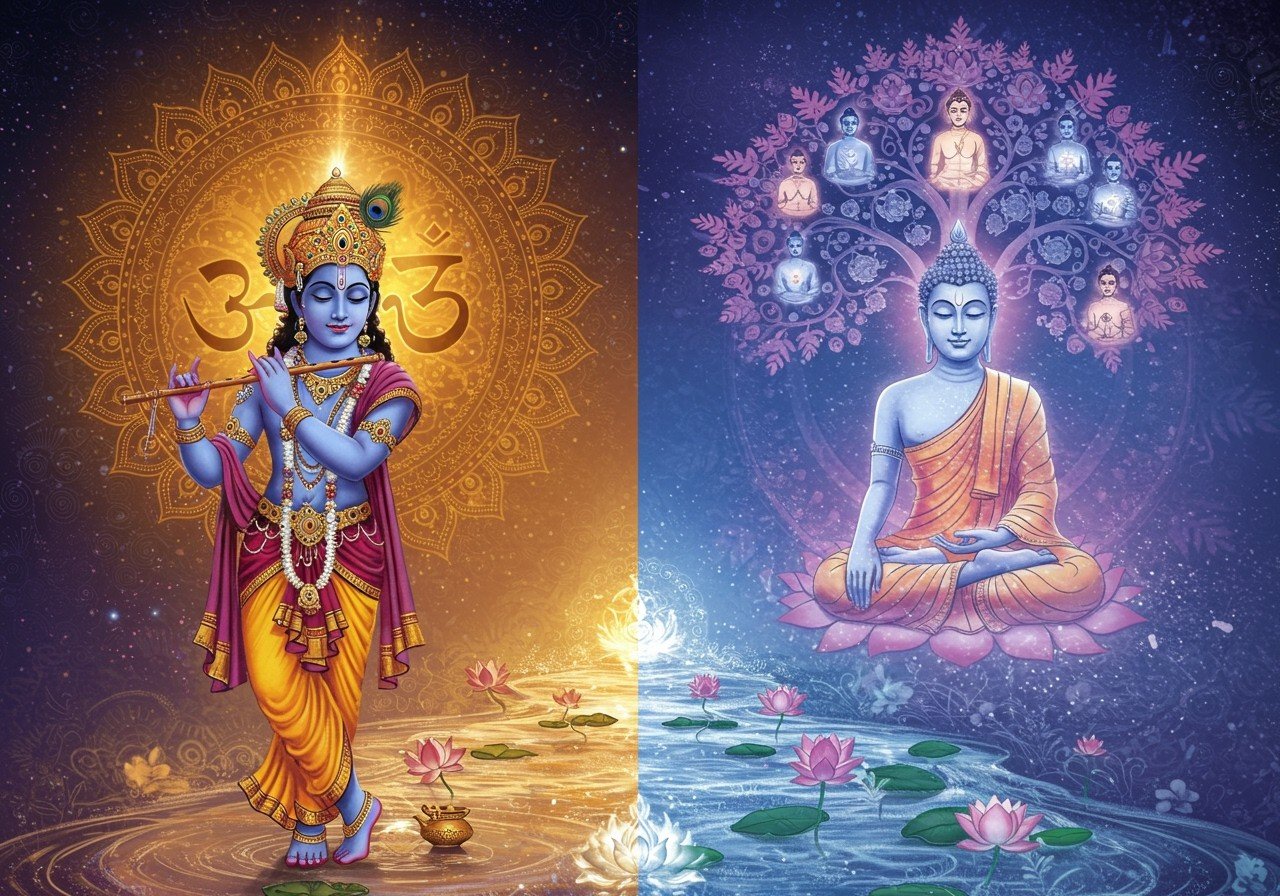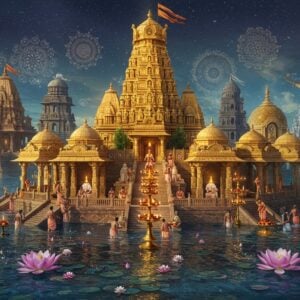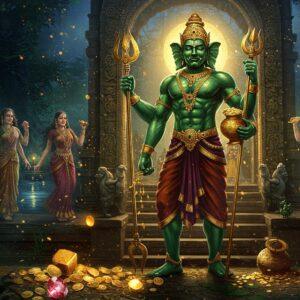
In Indian spirituality, the concepts of Moksha and Nirvana hold immense significance. Both represent liberation and freedom from the cycle of birth and death (samsara), but they stem from different philosophies. Grasping these concepts is crucial for those who cherish tradition and spirituality, particularly within the Indian context. This article delves into the nuances of these paths to liberation, highlighting their similarities and differences.
Understanding Moksha
Moksha, a cornerstone of Hindu philosophy, signifies liberation from samsara. It’s considered the ultimate goal of human life, alongside Dharma (duty), Artha (prosperity), and Kama (pleasure). Achieving Moksha leads to union with Brahman, the ultimate reality.
Several paths lead to Moksha in Hinduism:
- Bhakti Yoga: Devotion to a deity. This path emphasizes a loving relationship with the divine, fostering deep connection and surrender.
- Jnana Yoga: Pursuit of knowledge and wisdom. This path involves studying scriptures, contemplation, and self-inquiry to realize the true nature of reality.
- Karma Yoga: Selfless action without attachment to results. This path focuses on performing one’s duties without expecting rewards, fostering detachment and purification.
- Raja Yoga: Meditation and mental discipline. This path utilizes practices like breathwork (pranayama) and concentration to still the mind and achieve higher states of consciousness. It’s a path of self-control and inner exploration.
Check out our blog on common meditation challenges.
Learn more about breathing exercises for meditation.
Ethical living and detachment from material desires are crucial for attaining Moksha.
Understanding Nirvana
Nirvana, the ultimate goal in Buddhism, represents the end of suffering and the cessation of rebirth. It involves realizing the absence of self (Anatta) and the impermanence of all things (Anicca).
The Eightfold Path leads to Nirvana:
- Right Understanding: Comprehending the Four Noble Truths and the nature of reality.
- Right Intent: Cultivating thoughts of loving-kindness, compassion, and non-violence.
- Right Speech: Speaking truthfully, kindly, and avoiding gossip or harmful words.
- Right Action: Acting ethically, refraining from stealing, killing, or sexual misconduct.
- Right Livelihood: Earning a living in a way that does not harm others or oneself.
- Right Effort: Cultivating wholesome mental states and abandoning unwholesome ones.
- Right Mindfulness: Paying attention to the present moment without judgment.
- Right Concentration: Developing focused attention through meditation.
Meditation and mindfulness are key to attaining Nirvana. Parinirvana refers to the final Nirvana reached upon death after achieving complete enlightenment.
Moksha vs. Nirvana: Key Differences and Similarities
Moksha and Nirvana both symbolize liberation but differ in focus and origin. Moksha, rooted in Hinduism, centers on union with a supreme being. Nirvana, rooted in Buddhism, involves the cessation of desires and self. Philosophically, Moksha involves the soul’s liberation, while Nirvana involves understanding no-self.
Dive deeper into Hindu scriptures for more insights.
Moksha is often achieved through devotion and union with God. Explore our blog post on Krishna, or our post on Vishnu.
By contrast, Nirvana is achieved through self-realization and insight.
Despite their differences, both Moksha and Nirvana share common ground:
- Escape from Samsara: Both aim to liberate individuals from the cycle of birth and rebirth. This liberation marks the end of suffering and the attainment of lasting peace.
- Spiritual Realization: Both represent the pinnacle of spiritual growth and understanding. They signify a profound transformation of consciousness and a deep connection to the true nature of reality.
Moksha and Nirvana: Delving Deeper into Liberation
Let’s explore the core concepts of Moksha and Nirvana in more detail, drawing upon up-to-date information and addressing key points of debate.
Moksha: Liberation through Oneness
Moksha, in Hinduism and Jainism, signifies liberation, the ultimate freedom from the cycle of birth and death. It’s about realizing the inherent unity of one’s soul (Atman) with Brahman, the ultimate reality. This realization involves a profound shift in perspective, recognizing the interconnectedness of all existence. Moksha is not just an abstract concept; it’s considered one’s true nature, a state of being that is already present but often obscured by ignorance and attachment.
Nirvana: Liberation through Detachment
Nirvana, central to Buddhism and Jainism, is often defined as the cessation of desire and suffering. It’s a state of profound peace and liberation achieved through the extinguishing of the “fires” of greed, hatred, and delusion. Nirvana involves realizing the non-existence of a permanent self or soul (Anatta), a concept that distinguishes it from the Hindu understanding of Moksha. This realization leads to detachment from worldly concerns and a deep sense of equanimity.
Points of Distinction and Debate:
- The Concept of Self: A central point of debate revolves around the concept of self. Nirvana emphasizes the non-existence of a permanent self, while Moksha focuses on the realization of the self’s unity with the divine. This difference in perspective shapes the paths and practices associated with each concept.
- Nature of Liberation: While both aim for liberation from samsara, the nature of that liberation is understood differently. Moksha is often described as a state of blissful union with Brahman, while Nirvana is characterized by the cessation of suffering and the attainment of enlightenment.
Find Your Guru: Guidance for Your Spiritual Journey.
Shop Spiritual Items for Your Journey at Poojn.in
Poojn.in provides a wide array of spiritual products to support your journey towards Moksha or Nirvana:
- Meditation Supplies: Enhance your meditation practice with our Red Sandalwood Mala and other meditation accessories.
- Incense and Dhoop: Create a sacred atmosphere with our Swarna Champa Agarbatti, Bharath Darshan Incense Sticks, and Shubh Labh Prayer Agarbatti.
- Deity Idols: Find beautifully crafted idols of deities like Lord Shiva to deepen your devotion.
- Camphor: Enhance your puja rituals with our Mangalam Camphor (Butter Paper) or Mangalam Camphor Tablets.
- More: Explore our wide range of puja items, sacred texts, and more to support your spiritual practices.
Visit www.poojn.in to discover our complete collection. We offer verified authentic products, secure packaging, and pan-India delivery.
Embracing Your Spiritual Path
Whether you seek Moksha or Nirvana, the journey is deeply personal. It’s a path of self-discovery, requiring dedication, reflection, and a sincere desire for liberation. Embrace the wisdom of these ancient traditions and find your own path to spiritual fulfillment.
Planning a spiritual retreat? Our Ashram Stay Guide can help.
A Devotee’s Guide to Maa Manasha and Her Sacred Temples
Learn more about Lord Indra.
Kushal Mangal Kasturi Puja Prayer Agarbatti
Ramcharitmanas: A Deep Dive into Devotion and Epic Narrative
Hanuman Chalisa: Meaning, Benefits, and Recitation
Kumbh Mela Guide: A Spiritual Journey’s Practicalities


